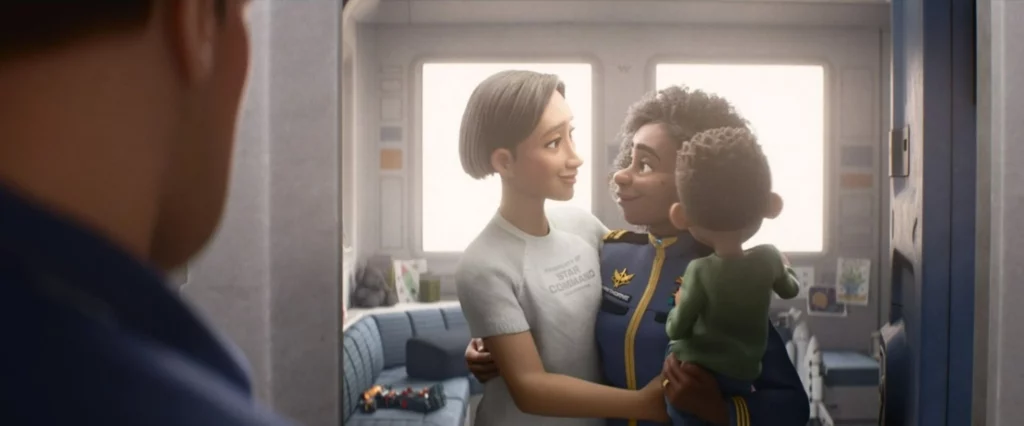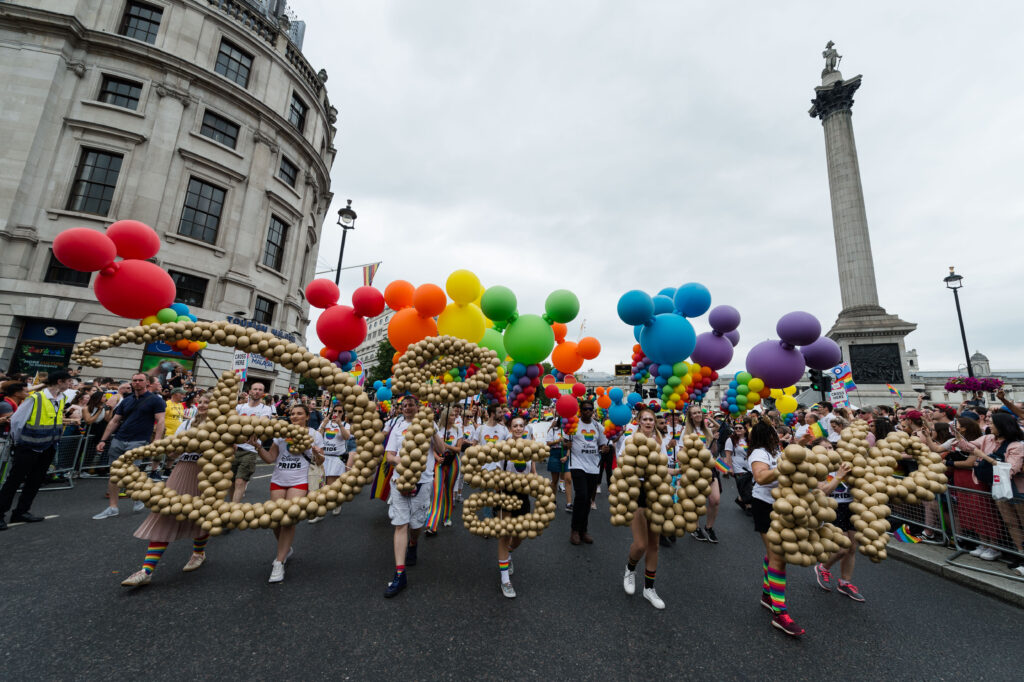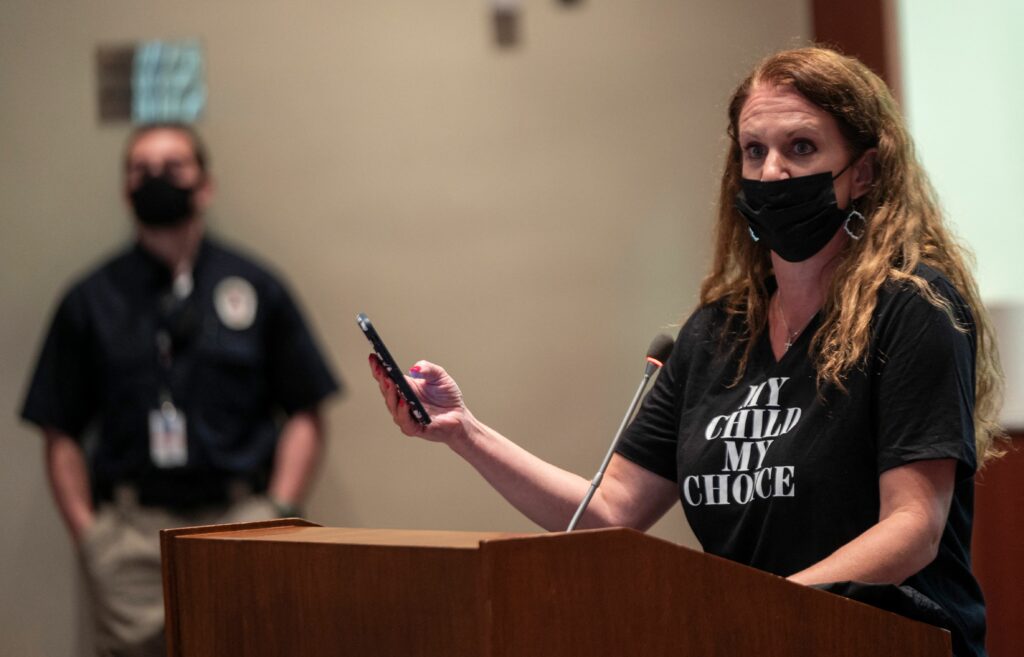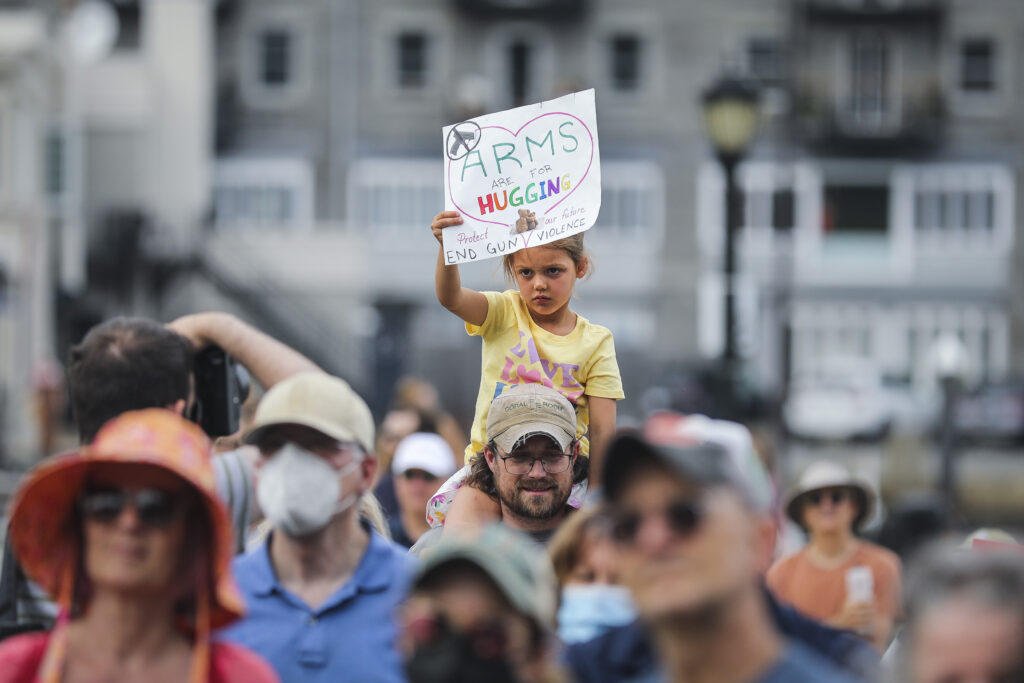What’s Behind the Backlash to Lightyear’s Animated Kiss?
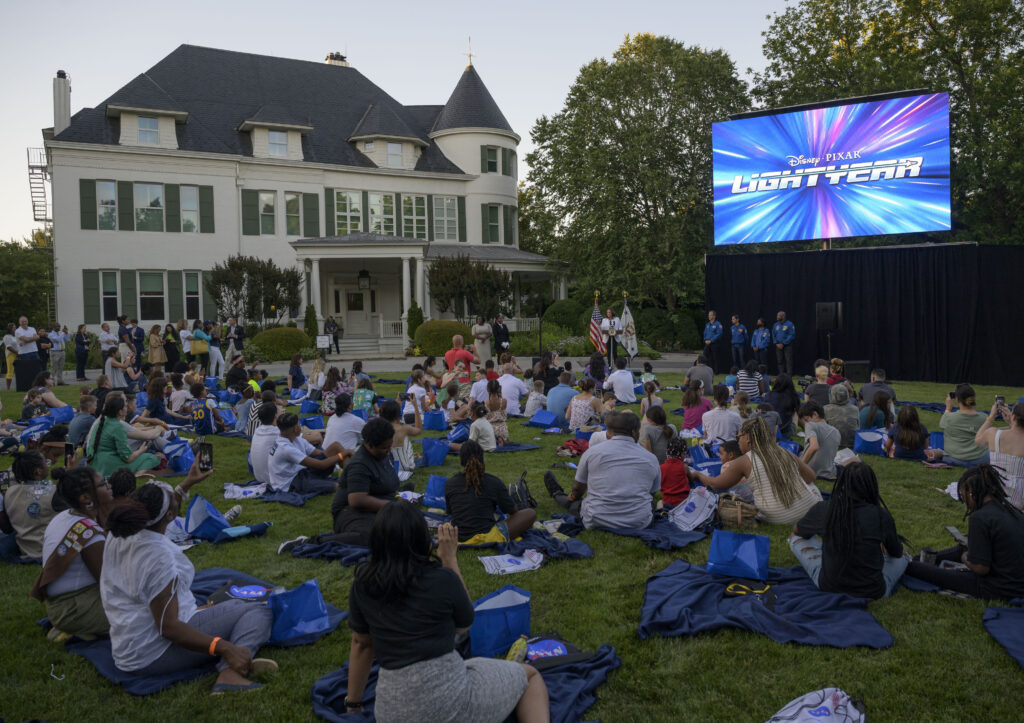
On June 17, Walt Disney Pictures and Pixar Animation Studios released the computer-animated film Lightyear, a spinoff from the beloved Toy Story series that develops the backstory of space ranger Buzz Lightyear.
I am a parent and an anthropologist who researches social media and teaches a class called Anthropology of Disney. So, when Lightyear made its debut in theaters, I paid close attention to Twitter. That’s because in the film, Alisha Hawthorne, Buzz’s best friend and commanding officer, kisses her wife, Kiko. The scene is brief: I blinked and missed it the first time watching with my 9-year-old daughter. Still, as the first same-sex kiss depicted in an animated feature film by Disney-Pixar, I expected there to be quite the flurry of thumbs on Twitter, both for and against the kiss. I was right.
Even before this latest incident, however, Disney has been in the news in the U.S. quite a bit lately. Florida’s governor, Republican Ron DeSantis, went toe-to-toe with the organization over Disney’s vocal opposition to the Parental Rights in Education bill (a.k.a. “Don’t Say Gay” bill), which passed in March. The bill—one of many anti-LGBTQ laws and policies recently passed in the U.S.—limits educators from talking about LGBTQ+ issues with students in the third grade and younger. As a result of the company’s opposition, DeSantis and his PR team launched an attack on Disney’s reputation. Other Republican politicians, such as U.S. Sen. Marsha Blackburn from Tennessee, have expressed outrage at Disney’s shift toward using more gender-inclusive language in their theme parks. More than ever before, the brand is now associated with “wokeness,” which has become politically toxic for conservative audiences.
The conservative backlash against Lightyear over the kiss is not surprising. For the past several years, Republican politicians have been busy linking the supposed threat of wokeness to parents’ rights to protect their children. This justification has been used to oppose the teaching of structural racism and the June celebration of Pride month in schools—and led to bans removing books in schools and in public libraries that discuss identity-related topics like gender, sexuality, and race. The attorney general of Texas even wrote a nonbinding legal opinion in February stating that certain gender-affirming procedures for youth constituted child abuse, possibly implicating parents involved in such care.
The recent politicization of parenting doesn’t stop there; it also includes debates over school shootings and what to do about them, parental consent for abortions, and COVID-19–related anti-masking and vaccine hesitancy. That folks are as divided as they are about all these issues shows how successful politicians have been at fabricating imaginary risks and ignoring real ones. While social media users are busy fighting about children’s well-being at the level of cartoon characters in space suits, legislators are passing laws that may actually make children less safe.
What is surprising is that Disney is now very much at the center of public discontent. Up until very recently, Disney seemed untouchable. Nothing, even public criticism by an activist with the Disney surname, could shake its image as a wholesome family company synonymous with childhood nostalgia.
People are mad, they are mad at Disney of all things, and this should tell us something.
Sure, Disney has regularly faced criticism, especially by academics. But these calls to hold Disney accountable for what it is teaching children—what scholars Henry Giroux and Grace Pollock call its “public pedagogy”—are usually about Disney not being progressive enough.
In my Anthropology of Disney class, for example, we analyze the gendered stereotypes of the company’s princess films—from the early ones like Snow White (1937) and Cinderella (1950) to the presumably more progressive films that set off Disney’s rebirth in the 1990s, such as The Little Mermaid (1989). Disney also has a poor track record of representing racial minority characters, even when it tries to “do better.” Pocahontas (1995) and Mulan (1998), for instance, at times play into racial stereotypes or gloss over historical realities.
A debate my class often has is whether Disney uses its power as one of the most influential media conglomerates ever to nurture a more just view of the world and the people in it. Students typically try to thread a needle through fond memories of Disney’s impact on their childhood and troubling realizations related to outdated gender and race stereotypes—particularly in the older animated films. [1] [1] The Princess and the Frog (2009), the Frozen franchise (2013, 2019), and Moana (2016), while they have their problems and oversights, have tackled more complex representations of race, gender, and Indigeneity. Some see Disney’s reach as emblematic of the negative consequences of globalization and consumer capitalism. Most perceive Disney as falling short. Rare is the view that Disney is too woke.
Hence, my surprise when I analyzed a collection of tweets associated with Lightyear. According to many Twitter users, Disney was now seemingly as woke as woke could be.
Using the various permissions I have as an approved academic researcher through Twitter’s developer portal, along with the web application Postman, I searched for tweets about Lightyear from June and July of this year. I worked with an undergraduate student researcher, Sarah Koch, to code the tweets and identify prominent themes. [2] [2] Sarah Koch, a sophomore at Centre College in Danville, KY, also contributed to the writing of this article.
Sarah and I identified 61 individual codes, or key words and phrases. The most popular code by far was “childhood” followed by “lesbian/gay/homosexual,” “parents protect/in charge of kids,” and “media’s influence on children.” Then came “exposure to ‘mature’ ideas,” “kiss,” and “children’s movie.” From these codes, a clear narrative emerged within the sample of tweets, one that echoed the present political and cultural debate surrounding the extent to which parents should have control over the exposure of their children to certain ideas and identities.
Folks who praised the movie focused on nostalgia for the Toy Story franchise or pushed back against critics of the kiss by insisting it was either no big deal (or no bigger deal than a straight couple’s kiss) or a positive example of queer representation.
Outraged Twitter users, by contrast, focused on several intersecting issues. Some claimed kisses in general were inappropriate for children’s movies; one claimed their kids—who “still think babies come from the sky”—would be confused by the scene. Others explicitly denounced how the kiss was between two women. These folks referenced bad “values,” the “LGBTQRSTUVWXY gender ideology,” and problematic “gay sex scenes.” Many suggested Disney was forcing a woke “agenda.” They used phrases like “shoving down our throats,” “[Disney is] coming for our children,” “grooming,” “infiltrate,” and “twist the minds of little kids.” Some even worried about “transgender Buzz Lightyear” and “drag queen Bo Peep.”
All the criticisms tended to come in tandem with disapproval of the media’s influence on children and the trampling of a parent’s right to control their child’s exposure to certain ideas and protect them from perceived harm.
As an anthropologist, I think it’s worth thinking about how and why parents are seen as protectors of vulnerable children. This is not a view of parenting—or of children—that exists cross-culturally. And while it’s prevalent in the U.S. today, protecting children from harm has not always been considered the role of U.S. parents either.
Researchers of parenting in Western societies have shown that the notion of parenting is at least as old as industrialization but has acquired new meanings in the present. Indeed, the term “parenting” exploded in the 1970s. With the popularization of “parent” as a verb, researchers say, came the perception of parenting as an exercise in the management of risk. In places where parents are viewed as less responsible for a child’s total socialization, children may be given more independence and “managed” less often.
Read more, from the archives: “What Industrial Societies Get Wrong About Childhood.”
In the case of criticisms of Lightyear, parents insisted they needed to be able to control what their children saw to protect them from the risk of “mature” content. However, a closer look at the substance of these tweets reveals something else too. This is not just about controlling what children see. It is about controlling who they think their children are. To put it simply, they fear the kiss in Lightyear might “turn” their straight children gay, their cisgender children transgender, or their good children “bad.”
The social media discourse around the movie Lightyear says a lot about our present political and cultural obsession with parental protection of children—and how heterosexist and cissexist ideas play into those fears. To be clear: Children do need protection—but it’s from the politicians who push book bans instead of assault weapon bans, who advocate silence and shame rather than pride in who children are, and whose legislation is lightyears away from meeting children’s actual needs.
Firearms are the leading cause of death for U.S. children ages 1–19. Children are dying needlessly because they do not have health insurance. Mental health crises among children, which often result in self-harm, are on the rise.
Children in the U.S. are facing real risks. Lightyear isn’t one of them.
































